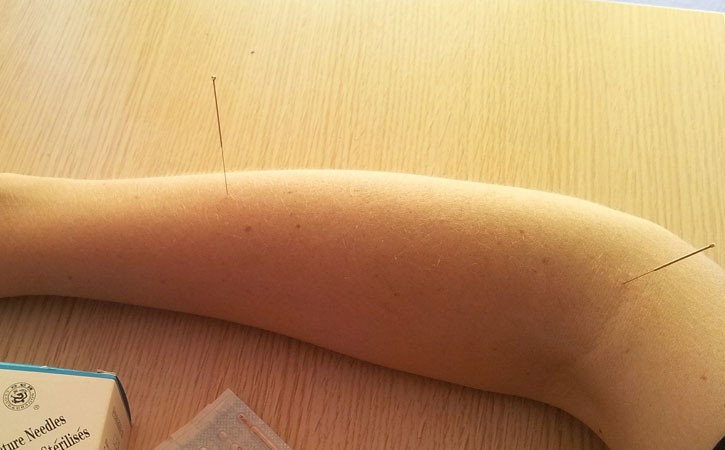in Acupuncture
Acupuncture and Phantom Limb Pain (PLP)

Phantom Limb Pain is a common occurrence resulting from people who have had their limbs amputated.
Studies have shown that phantom limb pain affects 70-80% of the amputees few days post operation, and may occasionally remain so for quite a few months after. It is not clear exactly why this sometimes happens.
After having the leg or arm amputated, the person feels pain in the missing limb as if it is still there. This could be a result from a system of various patho-physiological mechanisms in the body which affect the peripheral, spinal and central nerves, or it could be purely psychological. It creates an abnormal sensation perceived from the previously amputated limb. The sensation of phantom limb pain (PLP) involves sensory inputs from the body and nerve impulses that are sent to the missing limbs location and return to the central nervous system and the brain. The patient complains of a sensation emanating from the absent limbs such as burning, cramping or shooting pain which is believed to come from the injured nerve at the amputated site.
I treated a case of Phantom Limb Pain, during which a 62 year old man came to me with a history of cancer. His right arm was amputated from the shoulder as it was riddled with melanoma. Since the operation last December, he was suffering Phantom Limb Pain that has caused him sleepless nights and distress. Ten months after the operation, he described his pain as tight, sometimes a dull achy pain and a kind of a pulling sensation. He also felt that his wrist and hands were bound and the last 2 fingers of his phantom limb were stuck together. He had tried hypnotherapy, and he was on strong pain killers to relieve the pain, but none of the treatments had relieved his discomfort.
As acupuncture on his amputated right limb was impossible, his intact left arm was considered. As he described the pain pathway down his phantom limb, I decided to treat his left arm along the same lines, using the ‘mirroring technique’. Needles were inserted around the left wrist and hand to help release his virtual hand.
Initially, he felt no change, but eventually, he felt his phantom limb growing heavier, and relaxing, using his left arm to indicate this. He felt his pain lessen, but he still has not experienced a release in his bounded hands. Eventually, he suddenly remarked that his phantom limb felt free, and his last two fingers became unstuck.
By the end of the session, his phantom limb felt more comfortable, his hands were free to move and he was pain free.
This article was written by Jennie Chew, Acupuncturist.
- Deepen Embodiment: Somatic Breathing with the Realization Process - 20th June 2025
- How Massage Transforms Muscle and Physical Health - 16th May 2025
- What is Traditional Chinese Medicine (TCM)? - 29th April 2025
